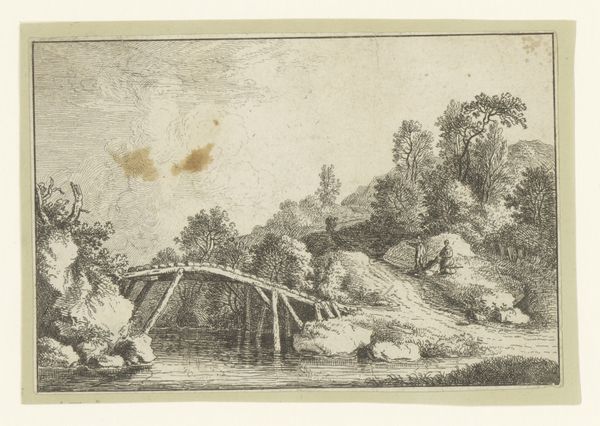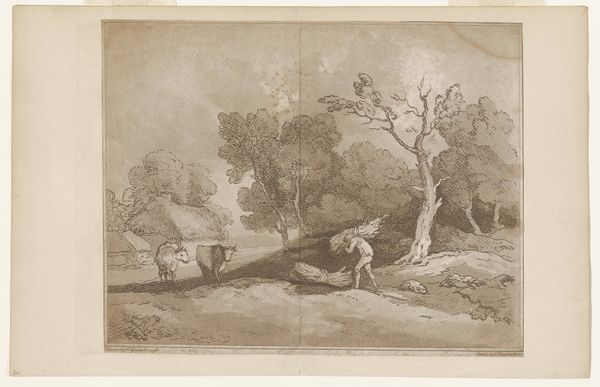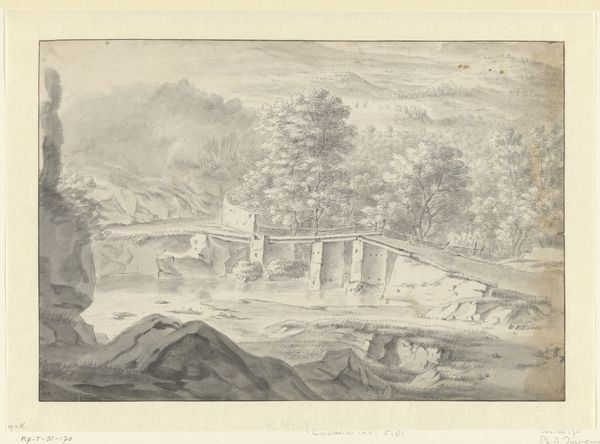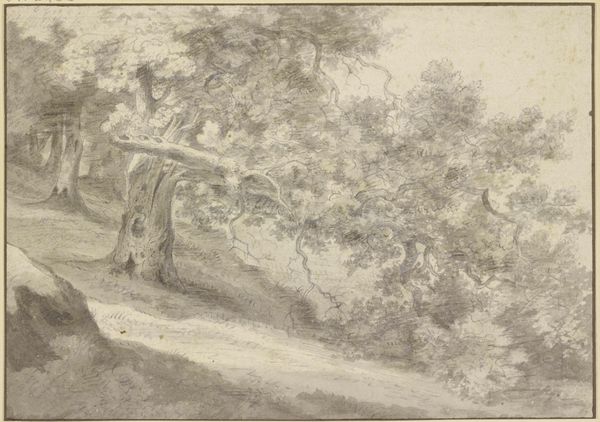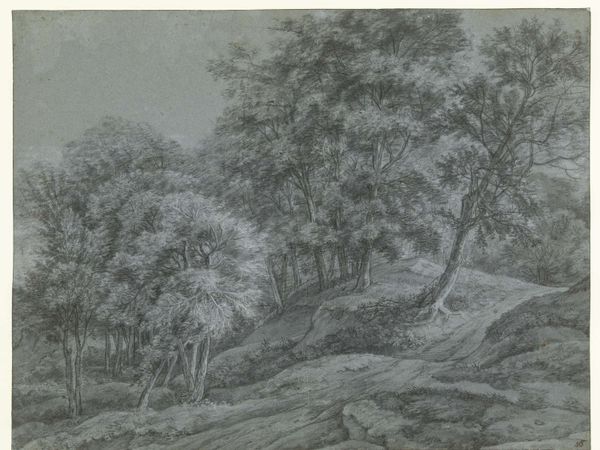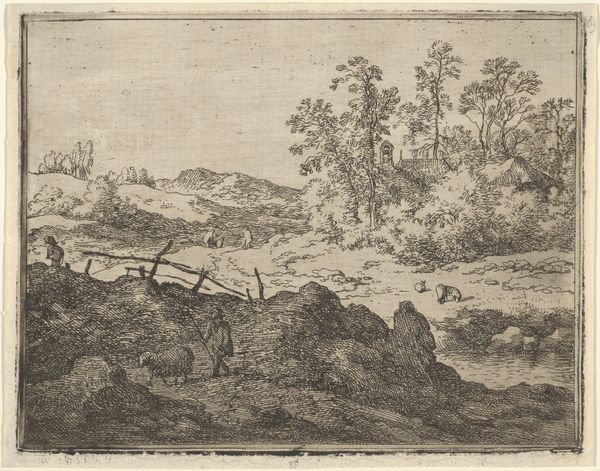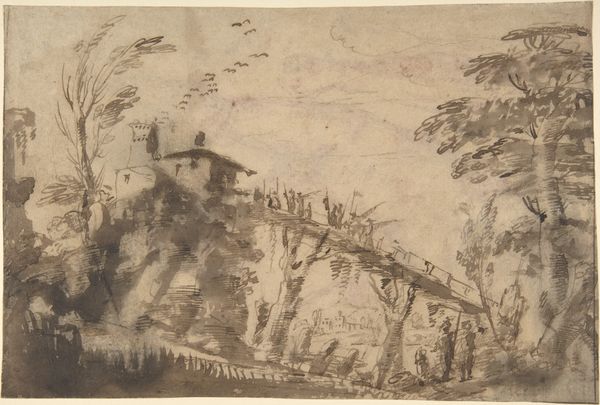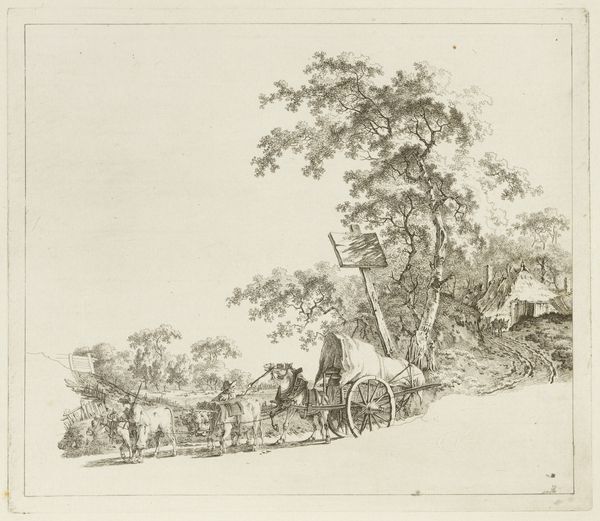
drawing, paper, pencil, graphite
#
drawing
#
netherlandish
#
landscape
#
paper
#
classicism
#
romanticism
#
pencil
#
graphite
Copyright: Public Domain
Curator: What a delicate and serene scene. It feels like a captured memory, or a stage set for introspection. Editor: Indeed. We’re looking at "The Swiss Bridge at Elswout Manor," a pencil and graphite drawing on paper by Franciscus Andreas Milatz, created sometime between 1790 and 1800. The work offers us a picturesque view of a rustic bridge. What strikes you as you continue to observe this artwork? Curator: It’s the light. That soft, pervasive light bathing everything, even in what should be shadow. The lack of true darkness almost feels dreamlike, and emphasizes the fragility of the bridge, which, if you think about it, is what ties the people to each other. And the nature embracing the bridge. The balance of each aspect. Editor: I'm drawn to the figures on the bridge. They're quite small in the overall composition, almost swallowed by the landscape. And even smaller, but maybe on closer look we see the bridge can be perceived as a symbol of transition and human intervention within the natural world. It evokes themes of Romanticism with its emphasis on emotion, individualism, and the awe of nature. But can also reference social class; a privileged view afforded to inhabitants of the Estate vs the everyday rural population, don't you think? Curator: Hmmm. Yes, perhaps... And what is interesting to me is the tension created between the careful details and the broader sweep of light and shadow, It creates a dance between reality and something far less solid... Do you feel a nostalgia seeping through the picture, too? Like something fading from existence? Editor: Most certainly. Given that this work dates back to a period marked by social and political upheavals, like the French Revolution and the rise of nationalism, the artwork could be seen as an attempt to escape these conflicts into a world of serene beauty, untouched and timeless. A world available to few and reflecting back the idea of ownership through possession of landscape. It might reflect nostalgia for the past, perhaps a pre-industrial vision or fear for the changing present and future. Curator: Right, right, right! So true. Thinking about it now, this artwork for me now resonates a bit like holding onto a feeling or thought before it vanishes completely. As a whisper, which once lingered so bold. Thanks! Editor: Thank you. And it reminds me of how art serves as a witness to its time. Always revealing the intersection of political awareness, history, emotions, society and how we perceive beauty.
Comments
No comments
Be the first to comment and join the conversation on the ultimate creative platform.
